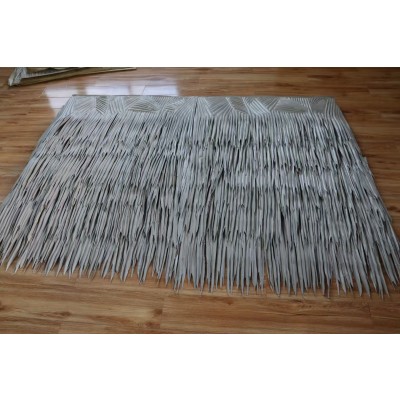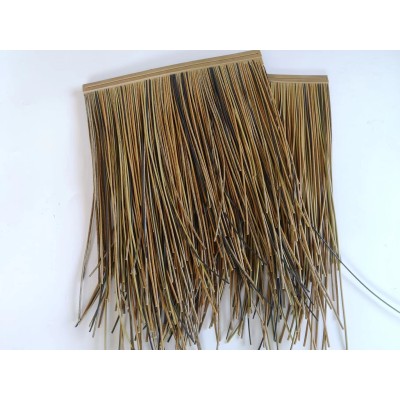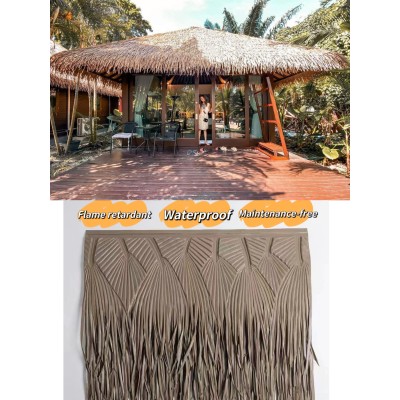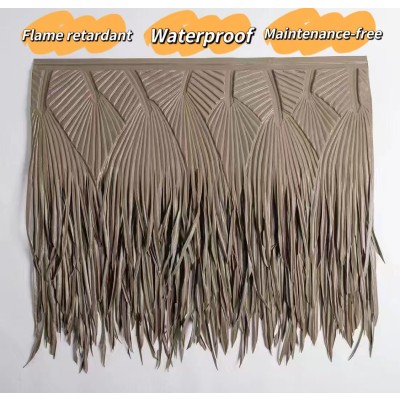Study on artificial straw roof at Lahana Resort, Phu Quoc Island
Study on artificial straw roof at Lahana Resort, Phu Quoc Island
Abstract: This paper focuses on the unique artificial straw roof of Lahana Resort in Phu U Island, and discusses its design concept, material characteristics, construction technology and significance to the overall atmosphere and sustainable development of the resort. Through field investigation, case analysis and other methods, this paper deeply analyzes this characteristic architectural element, and provides reference examples for related architectural design and tourism resort facilities construction.
I. Introduction
As a well-known tourist destination in Phu Quoc Island, the Lahana Resort attracts many tourists with its unique architectural style. Among them, the artificial straw roof has become a landmark feature of the resort, which not only shows the regional culture and customs, but also achieves a delicate balance in function and aesthetics, which leads to the necessity of in-depth research.
Overview of Phu Quoc Island and Lahana Resort
(1) Geographical and cultural environment of Phu Quoc Island
Phu Quoc Island is located in the south of Vietnam and has a tropical maritime climate with plenty of sunshine and rain. The combination of local culture and ethnic diversity, and the use of natural materials in traditional architecture, harmoniously co-existing with the surrounding environment, provide inspiration for the design of Lahana Resort.
(2) Positioning and style of Lahana Resort
Lahana Resort is positioned as a high-end leisure destination, featuring a beachfront vibe and a quiet, laid-back atmosphere. The overall architectural style strives to restore the charm of traditional Vietnamese countryside, with artificial straw roofs playing a key role in setting the visual tone.
Third, artificial straw roof design concept
(1) Cultural inheritance orientation
Absorbing the essence of Vietnamese traditional rice farming culture, the straw roof form evokes people's memory of the farming history, integrates ancient folk elements into the modern holiday space, so that visitors can enjoy the comfort and feel the regional cultural heritage.
(2) Pursuit of natural integration
Mimics the shape of the straw roof in the natural state, and the color and texture are close to the real straw precipitation effect over time. Conform to the relief of the coastal terrain, high and low scattered layout, like natural growth from the earth, with the beach, coconut groves, blue sea and blue sky constitute a unified picture.
Fourth, artificial straw roof material characteristics
(1) Selection of durable materials
In view of the long-term operation needs of the resort and the coastal high humidity, strong sunshine, wind and rain environment test, the use of special synthetic fiber to simulate the appearance of straw, which has excellent performance such as UV resistance, water resistance, mold resistance, corrosion resistance, far beyond the life of natural straw, reduce maintenance costs.
(2) Environmental considerations
Although the material is not natural, the production process of the material pays attention to environmental protection, non-toxic and harmless, can be recycled, reduce ecological damage, in line with the contemporary concept of sustainable tourism development, and avoid ecological problems that may be caused by the heavy use of natural straw, such as vegetation destruction and pesticide residues.
Five, artificial straw roof construction technology
(1) Structure construction innovation
Based on the modern building mechanics principle, a stable lightweight steel frame is designed to support the artificial straw roof. The frame is precast and quickly assembled on site to ensure that the roof shape is accurate and adaptable to different building volumes, providing a solid foundation for subsequent straw laying.
(2) straw laying skills
The layering method is adopted to imitate the natural straw weave texture and enhance the visual reality. The special connector fixes the "straw bundle" to the frame to ensure that it is not loose or displaced under the action of wind and rain, while taking into account the detachable, convenient for local maintenance and replacement.
Six, the value of artificial straw roof to the resort
(1) Aesthetic construction
The unique roof contour and warm tone, no matter the panoramic view from a distance or close to appreciate the details, add a rich pastoral poetry to the resort, become a hot spot for photography, greatly enhance the overall environmental art appeal, strengthen the brand visual image.
(2) Improving tourist experience
The sunshade and heat insulation function creates a cool and comfortable space for the interior, effectively alleviating the tropical high temperature discomfort; The outdoor leisure area under the roof creates a pleasant and lazy atmosphere, allowing tourists to immerse in the natural and leisurely situation, enrich the holiday experience, and extend the stay time.
3. Supporting sustainable development
Low maintenance requirements, long service life reduce resource consumption and waste generation; The application of environmentally friendly materials improves the eco-friendliness of the resort, attracts the tourists who pursue green travel, and lays a good ecological and economic foundation for long-term operation.
Vii. Conclusion and Prospect
The artificial straw roof of the Lahana Resort in Phu Quoc Island has succeeded in creating an architectural feature that combines cultural, aesthetic and practical values through subtle design, quality material selection and meticulous construction. In the future, such innovative applications can be promoted in more tourism and holiday projects, continue to optimize materials and processes, deeply integrate regional culture and ecological protection, inject vitality into the development of the global holiday industry, and create a new model of harmonious coexistence between man and nature.



